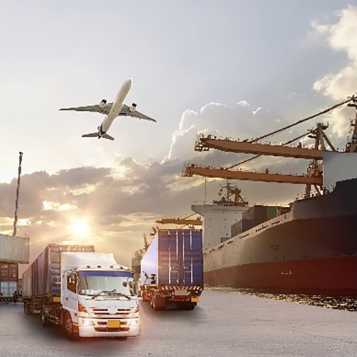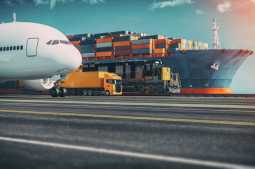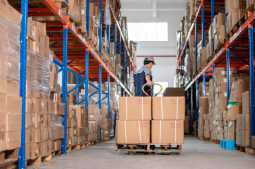import and export procedures When starting to trade goods internationally, whether importing or exporting anything. through which route It will have to go through these 8 steps. Let's see what each step has from the beginning to the end.
When agreeing to purchase or sell products The seller will have to start from producing the product or preparing the product in the warehouse to be ready for delivery. The procedure for exporting products is as follows:
1. Start importing and exporting at the seller's factory.
The first point of import-export transportation is not beyond the seller or the manufacturer. At this point, most of us tend to call it factory front in Thai or Shipper in English. The so-called factory is for the convenience of calling. Even if it is a small shop or a warehouse, the shipper will spend time talking to foreigners because it translates directly to the exporter or the seller. It can be deduced that the goods will be picked up. Or who will use other words such as Factory Factory, Warehouse Warehouse or Shop Shop according to their understanding? But please understand that the goods will start departing from there.
2. Transportation in the country of origin
Once the deal is complete, the goods will be packed and loaded onto trucks for transport to various ports/airports. Then transfer the goods to the ship or plane for export to the destination country called Trucking, Pick-up, Inland or Inland freight.
3. Export customs clearance
At this stage, the seller (Shipper) or international freight forwarder (Freight Forwarder) who has been procured will have the duty to declare to the Customs House what goods will leave that country. This point in the frets is called Outbound Customs Clearance, and this process usually doesn't take long. If no problem
4. Port/Airport of departure
When customs have released the goods Goods are allowed to be taken on ships or planes arranged for transport out of the seller's country. At this point in Freight language we will call it Port of Loading(POL), but not that the formalities are completed and the ship or plane will leave immediately. Still have to go through the process in the port as well. Depends on the regulations of the port and airport of each country as well.
5. Port/Airport of destination
When the goods have arrived in the buyer's country This point when the ship or plane has docked. The goods will be transported to the warehouse. Wait for the buyer or the customs and customs agents to come and check and release the next product. At this point in the Fret language we will call it Port of Discharge(POD).
6. Customs clearance of imported goods
A customs officer will come to check the goods that the buyer has brought in to see if the goods you have brought in are the same as those that have been notified to the Customs Department. Do you pay tax in accordance with the tax base set by the Customs Department? Is it a regulated product? If there is no problem when it's done You can take out from the port / airport. This point is Inbound Customs Clearance.
7. Transport from the port
The goods are released and then transported to the recipient. Road transport in Thailand also has regulations for larger trucks than pickup trucks. It's easy to remember that during heavy traffic when employees enter and leave work is when large vehicles are prohibited from running in urban areas.
What time can the truck run? : http://www.lissom-logistics.co.th/articles-details.php?id=35
8. Buyer
Now the last step is The buyer (Consignee) receives the product. This is the completion of the cargo transportation mission. At this stage, before receiving the goods A good buyer should check the integrity of the product before receiving it every time.
Here are 8 points that you should understand before importing or exporting. There will be different transport times in each country, but the steps will definitely be in these 8 steps.
Credit by https://bit.ly/2INl5hb
When agreeing to purchase or sell products The seller will have to start from producing the product or preparing the product in the warehouse to be ready for delivery. The procedure for exporting products is as follows:
1. Start importing and exporting at the seller's factory.
The first point of import-export transportation is not beyond the seller or the manufacturer. At this point, most of us tend to call it factory front in Thai or Shipper in English. The so-called factory is for the convenience of calling. Even if it is a small shop or a warehouse, the shipper will spend time talking to foreigners because it translates directly to the exporter or the seller. It can be deduced that the goods will be picked up. Or who will use other words such as Factory Factory, Warehouse Warehouse or Shop Shop according to their understanding? But please understand that the goods will start departing from there.
2. Transportation in the country of origin
Once the deal is complete, the goods will be packed and loaded onto trucks for transport to various ports/airports. Then transfer the goods to the ship or plane for export to the destination country called Trucking, Pick-up, Inland or Inland freight.
3. Export customs clearance
At this stage, the seller (Shipper) or international freight forwarder (Freight Forwarder) who has been procured will have the duty to declare to the Customs House what goods will leave that country. This point in the frets is called Outbound Customs Clearance, and this process usually doesn't take long. If no problem
4. Port/Airport of departure
When customs have released the goods Goods are allowed to be taken on ships or planes arranged for transport out of the seller's country. At this point in Freight language we will call it Port of Loading(POL), but not that the formalities are completed and the ship or plane will leave immediately. Still have to go through the process in the port as well. Depends on the regulations of the port and airport of each country as well.
5. Port/Airport of destination
When the goods have arrived in the buyer's country This point when the ship or plane has docked. The goods will be transported to the warehouse. Wait for the buyer or the customs and customs agents to come and check and release the next product. At this point in the Fret language we will call it Port of Discharge(POD).
6. Customs clearance of imported goods
A customs officer will come to check the goods that the buyer has brought in to see if the goods you have brought in are the same as those that have been notified to the Customs Department. Do you pay tax in accordance with the tax base set by the Customs Department? Is it a regulated product? If there is no problem when it's done You can take out from the port / airport. This point is Inbound Customs Clearance.
7. Transport from the port
The goods are released and then transported to the recipient. Road transport in Thailand also has regulations for larger trucks than pickup trucks. It's easy to remember that during heavy traffic when employees enter and leave work is when large vehicles are prohibited from running in urban areas.
What time can the truck run? : http://www.lissom-logistics.co.th/articles-details.php?id=35
8. Buyer
Now the last step is The buyer (Consignee) receives the product. This is the completion of the cargo transportation mission. At this stage, before receiving the goods A good buyer should check the integrity of the product before receiving it every time.
Here are 8 points that you should understand before importing or exporting. There will be different transport times in each country, but the steps will definitely be in these 8 steps.
Credit by https://bit.ly/2INl5hb





